Random access memory, or RAM, is the short-term or operating memory on your personal computer, and it is accountable for how the PC runs. As you continue to use your Windows PC, the available RAM (Random Access Memory) decreases. This happens as you install new programs, download applications, keep some unused files or create new files. Over time, your computer begins to slow down. Programs take longer time to launch and in the worst scenarios your computer runs into errors.
Such slow-running PCs are frustrating, and misused RAM is a key culprit why computers become sluggish. With a few simple troubleshooting steps and guidelines, you can free up RAM space and improve your computer's performance. Read below to know such steps:
Windows is designed to use available RAM. As RAM becomes needed for something else, it adjusts its RAM usage as needed. Your concern should just be whether it uses the paging file excessively. If it does, you should consider getting more RAM. Restarting your computer system will clear memory saved on RAM and reset all the running programs and applications. However, this method won’t clear the complete memory but it will boost up the processing speed of the system. By cleaning up apps running on the background on Windows 10. Update The Windows 10 & Softwares.
It is normal, and preferred to have a large memory cache, the more memory that is used for caching the faster your system will be If that RAM is required for anything else, the cache will be reduced as required automatically by Windows 10 Windows will set the initial cache size dependent on the amount of free memory you have to spare. Follow these suggestions to clear the memory cache in Windows 10 to free up RAM on the computer. Restarting the PC is the best way. Close unwanted programs and processes from the Task Manager. To clear the RAM in Windows 7, 8, and 10 via the task manager The task manager has long been an established feature in Windows systems. The background service lists running applications, services, and processes and also provides an overview of CPU and memory usage.
Uninstall the installed Programs
The RAM decreases as you install new programs on your computer; the more you install the programs the slower it will become. For everything appears on your computer takes up a certain amount of system resources. Over time, your computer gets more and more slowly, the boot time extends, and all programs take longer to launch. Hence, to get rid of this, just uninstall all the programs that are not needed keep only the required programs.
For this just follow the below steps:
- Click Windows Start button -> Control Panel -> Locate the programs you are no longer use -> Double-click Add or Remove Programs-> follow the instructions to uninstall the programs.
- After this just remove the delete the setup files of those uninstalled programs For this go to Start -> Program Files -> locate the uninstalled programs just delete them and empty the recycle bin.
Uninstall invalid and corrupt registry entries
Installing new applications will create new registry entries, even after uninstalling the programs will not remove its registries; they might remain where they've been stored. Over time, your computer will turn into mess. So remember to cleanup registry entries when you uninstall a program.
Click Windows Start button -> Click Run ->Type- regedit -> press enter to launch the Registry Editor -> Locate the uninstalled application -> Right-click on it and select Delete
Clear Windows Cache (Internet files)
As you open new site or pages on your internet browser, the address and other login information will be saved in a temporary files and Browser history to facilitate easy access when you need it the next time. However, this would even lead to unnecessary cache memory and hence needs to be removed.
- In control Panel, locate the Internet Options icon Double-click on it. Under “Temporary Internet Files” click Delete files and then “OK” to confirm. Once all files have been deleted, exit Control Panel.
- Open the browser, click on the Settings option and select History and now just select “Clear Browsing History” this will remove all the history and even free up the cache
- Click the “Start” button -> enter .tmp in the search field. You will find a list of temp files, browse through them and delete all unnecessary .tmp files.
Clear Junk files, temporary desktop files, log files etc...
As and when you use your system, your RAM memory will filled with some unused old files and other junk files. Hence one has to get rid of such files. For this you can use the Windows default tool called “Disk Cleanup”. Follow the steps mentioned below:
- Go to Start -> Programs -> Accessories -> System Tools ->Disk Cleanup
- Under Disk Cleanup tab and you will find many categories check on the following: Temporary Internet Files, Recycle Bin, Temporary Remote Desktop Files, Offline Files, Temporary Files, Compress Old Files and Setup Log Files.
- Now click the “More Options” tab and under “System Restore” hit the “Cleanup” button. (It removes all the System Restore points except the most recent one)
- Click the Disk Cleanup and click OK
This will delete all the unnecessary files on your Windows system and free up your RAM. Now your PC is free from unwanted programs and files, thus increases PC performance. Didn't you feel this as a lengthy procedure and requires extra care and time. Instead you can just make use of the Remo Privacy Cleaner software that will do this for you in just one single click. This tool can quickly uninstalls all the programs, removes internet cache and temporary files, erases the junk files, log files etc. Thus with one tool you can perform all the above steps in just a single click.
Don't worry if your computer gets stuck and Windows Task Manager warns 'High memory usage'. On this page, we will guide you to easily fix high memory usage issue in Windows 10/8/7 with the following resolutions:
| Workable Solutions | Step-by-step Troubleshooting |
|---|---|
| Fix 1. Close Unnecessary Programs | On Task Manager, find running programs that take high memory, click End Task...Full steps |
| Fix 2. Disable Programs from Startup | On Task Manager, go to Startup, right-click to disable big programs from Startup...Full steps |
| Fix 3. Defragment Hard Drive | Type dfrgui in Search, open Defragment and Optimize Drives, select drives to Optimize...Full steps |
| Fix 4. Fix File System Error | Run EaseUS Partition Master, right-click drives to fix file system error...Full steps |
| More Fixes... | Other 6 fixes are available here for you to follow and fix high RAM memory errors...Full steps |
What is High Memory Usage?
Clear Ram Windows 10 App
High Memory Usage is a state that Windows computers' RAM, ROM, or Cache usage grows to an extremely high level. Windows 10 high memory usage error is related to RAM and virtual memory.
When the PC has a high memory usage error, it will freeze while running a program and pops up an error message, warning that 'Your computer is low on memory'.
Follow to check if you are having this error and what caused high memory usage.
Define High Memory Usage Windows 10 Error:
Try the following steps to define if your computer is with high memory usage, high CPU, or high disk usage error:
Step 1. Press Ctrl + Alt + Del keys and select 'Task Manager'.
Step 2. At the Process tab, check the usage state of CPU, Memory, and Disk.
If the Memory column displays 70%, 80%, 90%, or 99% used as the two figures shown below, it's a 'High Memory Usage' issue.
High Memory Usage in Processes:
High Memory Usage in Performance:
Symptoms and Causes of High Memory Usage:
So what will happen when your computer is caught with a high memory usage issue? And what causes this error? Check it out.
| Symptoms of High Memory Usage | Causes of High Memory Usage |
|---|---|
|
|
10 Fixes for High (RAM) Memory Usage Issue in Windows 10
So how to fix 'high memory usage' or 'High RAM memory usage' issues? How do I reduce or fix the high memory usage in Windows 10?
Here is a list of all tested fixes, just follow to fix high memory usage Windows 10 issues immediately:
If you are having a similar problem in older Windows OS, like Windows XP, you can also give these fixes a try.
Method 1. Close Unnecessary Running Programs/Applications
When your computer is with high memory usage, you can try to close some unnecessary running programs and applications to fix this issue.
Step 1. Open Task Manager by right-clicking on the Windows icon and select 'Task Manager'.
Step 2. Go to the process tab, find the running programs that are taking high memory but you don't need it at all.
Step 3. Click the unnecessary programs and select 'End Task'.
Method 2. Disable Programs Running from Startup
Disabling programs running from Startup will effectively decrease the system load and saving quite a lot of CPU memory space.
Step 1. Press Ctrl + Alt + Del keys, select 'Task Manager'.
Step 2. Click on 'Startup' in Task Manager, right-click the applications that you don't want to run from Startup, and select 'Disable'.
Method 3. Defragment Hard Drive & Adjust for Best Performance
It will also help to save quite a lot of memory space by defragmenting hard drives. You can also refer to a manual way to defrag and optimize the disk for its best performance.
Defragment hard drives:
Step 1. Press 'Windows + R', type: dfrgui, click 'Defragment and Optimize Drives' to open this app.
Step 2. Click on the hard drives (C: drive for example) you want to defragment and click 'Optimize'.
Wait for the process to finish the defragment process. Do remember to restart the computer when the process completes.
Adjust for the best performance:
Step 1. Right-click 'This PC' and select 'Properties'.
Step 2. Click 'Advanced system settings', click 'Settings' under Performance.
Step 3. Check 'Adjust for best performance', click 'Apply' and 'OK' to confirm.
Method 4. Fix Disk File System Error
File system error is a major reason that may cause high memory usage or high CPU usage on Windows 10/8/7 computers. Professional partition manager software - EaseUS Partition Master can easily fix the error and get rid of it from your PC. It's easy for all levels of Windows users.
Check and Fix System Error
Method 5. Increase Virtual Memory
Virtual memory makes use of part of disk space to serve as memory so as to release computer memory stress. Therefore, when your computer is with high memory usage issue, you can try the following steps to increase virtual memory:
Step 1. Right-click on This PC, select 'Properties'.
Step 2. Click 'Advanced system settings' in the pop-up window.
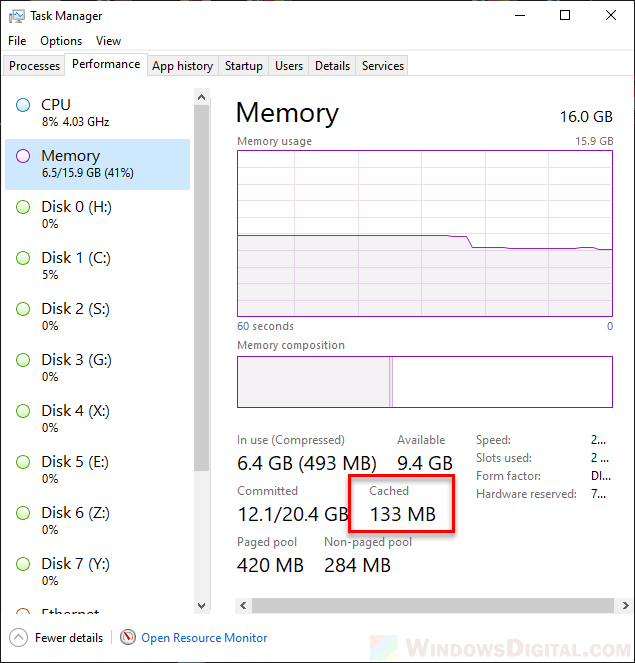
Step 3. Go to the Advanced tab, click 'Settings...' under the Performance section.
Step 4. Navigate to the Advanced tab, click 'Change' under the Virtual memory section.
Step 5. Uncheck 'Automatically manage paging file size for all drives'.
Step 6. Select C drive, check 'No page file', and click 'Set'.
Step 7. Click 'Yes' to continue.
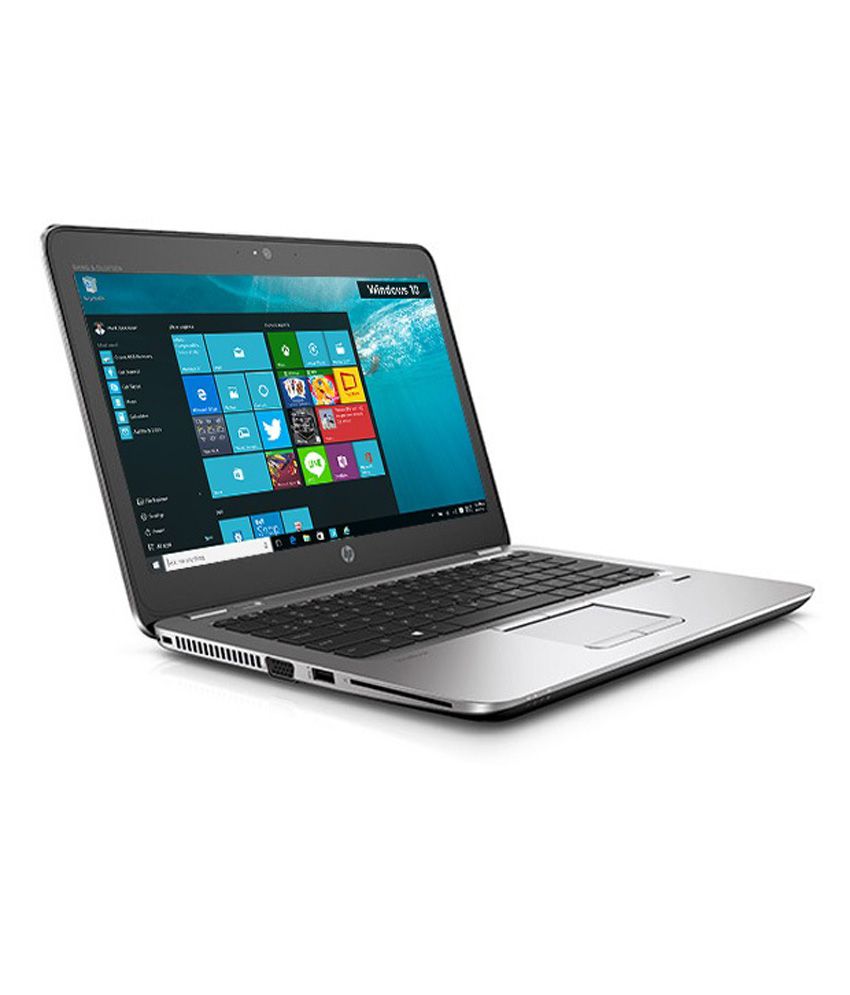
Step 8. Select a non-system partition, check 'Custom size', and set the same value in Initial Size and Maximum Size.
The value size is recommended to be twice big as the physical memory on your computer.
Step 9. Click 'Set' and 'OK' to save the changes.
Method 6. Disable Superfetch Service
Step 1. Press Windows + R, type services.msc into the Run box and click 'OK'.
Step 2. Locate and right-click 'Superfetch' > select 'Properties' > click 'Stop' on the pop-up windows.
Step 3. Click 'Disabled' from the 'startup type' drop-down menu.
Method 7. Set Registry Hack
This method will release some virtual memory on your computer by deleting page files in the Registry. Here is how to do so:
Step 1. Press Windows + R keys, type regedit to open the Registry Editor.
Step 2. Navigate to: HKEY_LOCAL_MACHINE/SYSTEM/CurrentControlSet/Control/Session Manager/Memory Management.
Step 3. Find and right-click ClearPageFileAtShutDown, select to modify its value to '1' and click 'OK'.
Method 8. Increase Physical Memory
Logically, when your computer is with a high memory usage issue, you can add a new memory card to your computer so to extend the physical memory.
You need to first check out the memory type by referring to the parameters of memory on your computer. Here is how to increase a physical memory on your PC:
Step 1. Check the physical memory size: Right-click on This PC and select 'Properties'.
Step 2. Open Task Manager and go to the Performance tab, click 'Memory'.
Step 3. Check out the speed, size of the memory to decide which type you'll need.
Step 4. Then purchase a new memory card, add it to your PC.
After adding the new memory to your computer, restart the PC and it will automatically detect the new memory.
Method 9. Disable NDU in Registry
Note: EaseUS technical support experts say this method may affect the usage of internet connection.
If you would like to try, here are the steps:
Step 1. Type regedit in Windows Search and click Registry Editor to open it.
Step 2. Go to: HKEY_LOCAL_MACHINE/SYSTEM/ControlSet001/Services/Ndu.
Step 3. Right-click on the Start DWORD and select 'Modify'.
Step 4. Change its value to 4, click 'OK' to save the changes.
After this, restart your PC and the high memory usage issue should be resolved.
If your computer internet connection gets disabled, we suggest you repeat the steps and change the Start word value back to the previous number - 2.
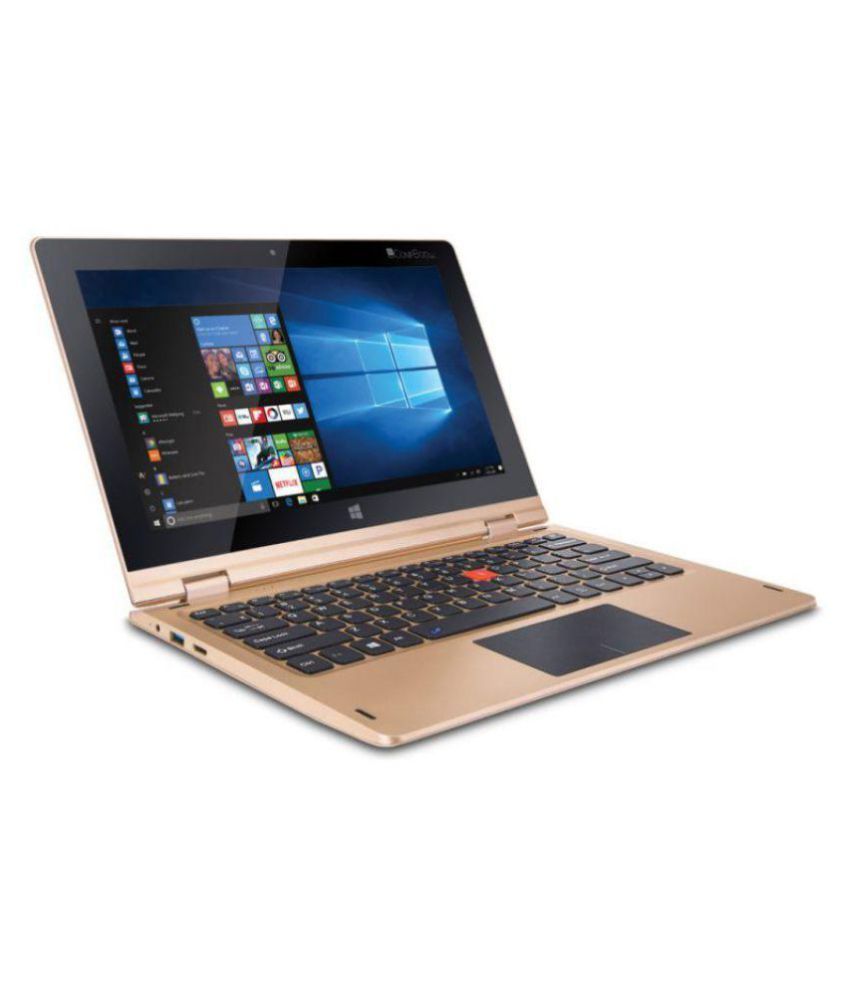
Method 10. Clean Up Virus
Sometimes, virus infection or malware may also take up high usage of memory on your PC. The best way out is to run antivirus software on you PC to clean up all existing virus, and malware immediately:
Step 1. Download and install anti-virus software on your computer.
Step 2. Run the anti-virus software and choose to scan your whole computer drive.
Step 3. Select to clean up all found virus or virus-infected files or devices.
Bonus Tips: How to Avoid High Memory Usage Issue on Windows 10
After you fixing Windows high memory usage on Windows 10/8/7, some of you may want to know how to prevent this issue from happening again.
Here, we'll offer tips to protect your Windows 10 computer from this issue.
How to Avoid High Memory Usage in Windows 10 - Tips
Here are some tips that you can follow to avoid high memory usage issues in Windows 10/8/7. See how to set your computer with the best performance:
- #1. Add a big enough memory card to the PC
- #2. Run virus cleaner regularly
- #4. Disable unnecessary programs from Startup
- #5. Release virtual memory from hard drive
- #6. Fix file system error and defrag hard drive regularly
Free Ram Cleaner For Windows 10
You May Also Interest In:
Some of you may also want to know how to define High CPU or High Disk Usage errors. Here are the steps'
Step 1. Hold Ctrl+Alt+Del keys, click 'Task Manager'.
Step 2. On the Processes tab, check the Memory or the Disk usage state:
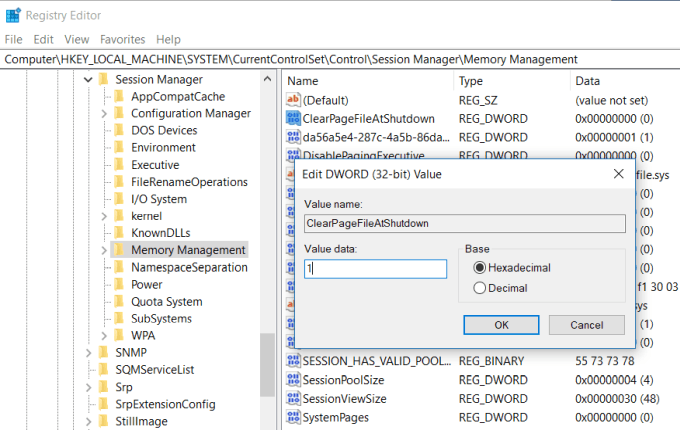
- The CPU column reaches up to 99% or even 100%, it's a 'High CPU Usage' issue. Refer to Fix 99% or 100% High CPU Usage for help.
- The Disk column shows high usage or even displays 100%, it's a 'High Disk Usage' issue. Follow to fix this problem.
Take Action, Keep Your Computer from High Memory Usage Issue
On this page, we provide tips to help you define whether your computer has high memory issues. And we also collected 10 practical fixes to resolve high memory usage Windows 10 error, and listed tips to help you avoid this issue.
Windows 10 Clear Ram Without Restarting
Besides managing RAM and virtual high memory usage issues, we also suggest you apply EaseUS disk management software to make your computer running smoothly again. EaseUS Partition Master helps to manage partitions, make full use of disk space and optimize disk performance to the best state.
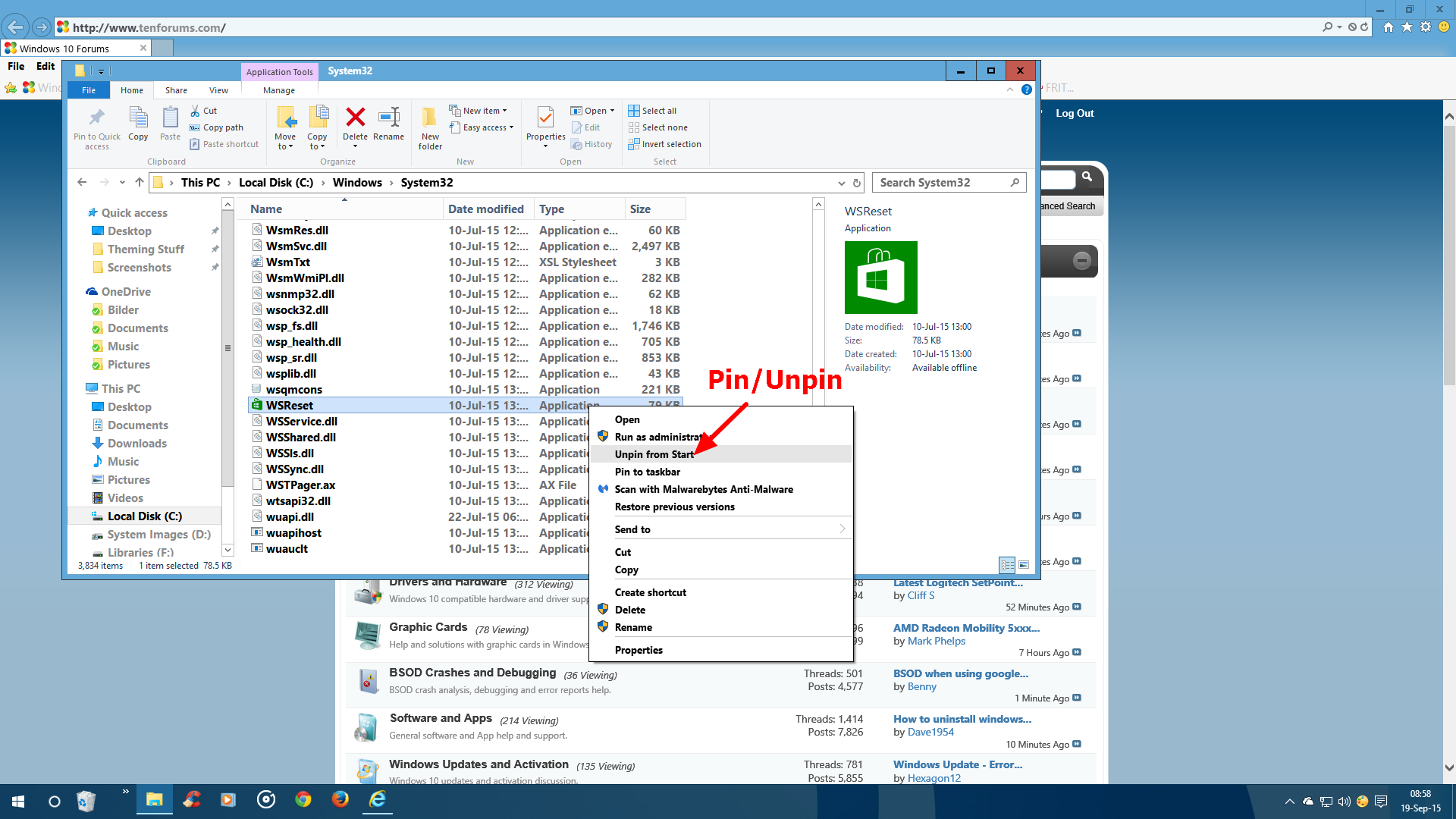
Now it's your turn. Take action and keep your computer from the high memory usage issue, making it running smoothly again.
